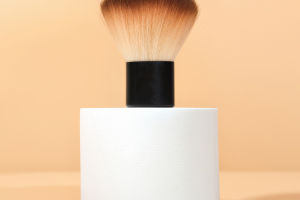Coated or Natural
As people increasingly focus on health and environmental protection, wooden tableware has become a favored natural and eco-friendly choice.
Whether to paint or not to paint is a common consideration when choosing wooden dinnerware. This article discusses the differences between painted and unpainted wooden tableware.
1. The Choice: Painted or Unpainted Wooden Tableware
a. Painted Wooden Tableware: Typically, painted wooden tableware undergoes treatment with one or more layers of coatings. These coatings often include food-grade varnish or environmentally-friendly alternatives.
By forming a protective barrier, these coatings effectively shield the interior of the wooden tableware from moisture, grease, and other food substances. This not only prolongs the tableware's lifespan but also simplifies its cleaning process.
b. Unpainted Wooden Tableware: Unpainted wooden tableware maintains the wood's natural integrity. Through processes such as polishing and grinding, its surface is rendered smooth and delicate.
This type of tableware forgoes chemical additives, aligning with the principles of health and environmental consciousness. However, its susceptibility to staining necessitates more attentive maintenance and cleaning.
2. Contrasting Painted and Unpainted Wooden Tableware
a. Safety: Once the coating on painted wooden tableware cures, it forms a protective film, effectively preventing harmful substances in food from permeating the wood.
Conversely, unpainted wooden tableware lacks this protective layer, making it more susceptible to food penetration and potentially posing safety risks compared to its painted counterparts.
b. Durability: Painted wooden tableware, with its protective coating, boasts enhanced surface hardness, rendering it less prone to scratches and wear.
On the other hand, unpainted wooden tableware's softer surface is vulnerable to environmental factors, increasing the likelihood of deformation or cracking over time and diminishing its durability.
c. Cleaning and Maintenance: Painted wooden tableware's smooth surface facilitates easy cleaning, often requiring only a gentle wipe with mild detergent.
In contrast, the porous surface of unpainted wooden tableware readily absorbs oil stains and food residue, demanding more meticulous cleaning and maintenance routines.
d. Aesthetics: Painted wooden tableware offers a plethora of color and texture options, allowing individuals to tailor their choices to personal preferences.
Unpainted wooden tableware, meanwhile, exudes a natural charm, retaining the raw beauty of the wood. However, its aesthetic appeal may be perceived as somewhat limited compared to its painted counterparts.
3. Conclusion
In conclusion, both painted and unpainted wooden tableware possess distinct advantages and drawbacks. While painted wooden tableware excels in safety, durability, and ease of cleaning, potential chemical residues warrant consideration.
Unpainted wooden tableware, embracing naturalness and eco-friendliness, may lack durability and require more diligent maintenance.
Therefore, when selecting wooden tableware, individuals should weigh their personal preferences and requirements, considering the implications of both painting and leaving wood untreated.


